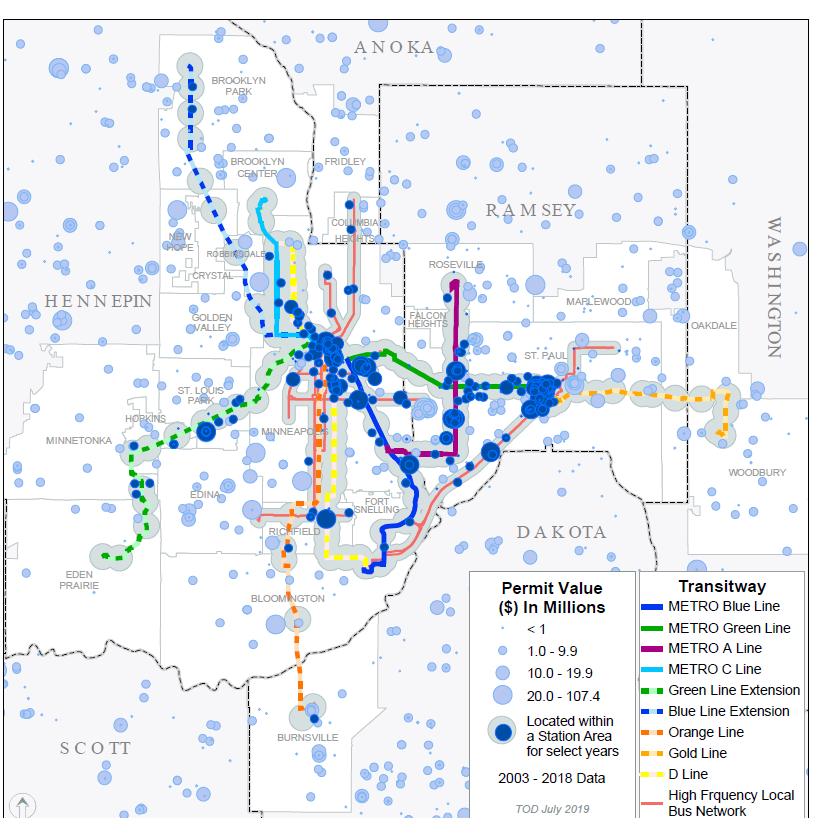
A new report from Metro Transit's Office of Transit Oriented Development finds that areas served by high frequency are attracting a considerable share of the region’s housing and commercial development.
According to the report, more than a third of the development that has occurred over the past 15 years has happened within a half-mile of corridors served by light rail, Bus Rapid Transit and bus routes with service at least every 10 to 15 minutes. The corridors represent 3% of the region's total land area.
“It’s a testament to the arterial importance of transit throughout the region,” Lucy Galbraith, Metro Transit Director of TOD said. “Wherever transit goes, developers continue to find success.”
Developers like David Wellington agree. He’s built several projects near transit, including his own private residence near the METRO Green Line, and has committed to building new housing near the METRO Green Line Extension, METRO A Line and METRO C Line.
“Transit access has really tuned us into the community around us,” Wellington said. “We’ve found it’s a big win to develop near high frequency transit.”
Past development that has occurred along transit corridors is valued at around $12 billion. An additional $8.2 billion in development, including 29,000 new housing units, is expected to occur along high frequency transit in the future.
Chase Real Estate is among those with an eye toward transit. Chase is building a 170-unit apartment building near a future METRO Orange Line station in Burnsville. Opening in 2021, the Orange Line will provide frequent, all day service on I-35W between downtown Minneapolis and Burnsville.
“We continue to see that Bus Rapid Transit, urbanism and walkability are a primary appeal for where residents choose to live and how they connect to jobs,” Development Manager Joe McElwain said.
Read the Development Trends Along Transit report
Learn more about the Transit Oriented Development Office